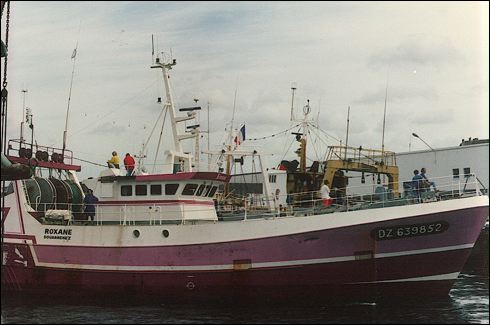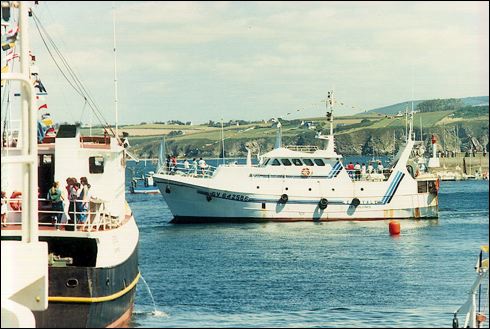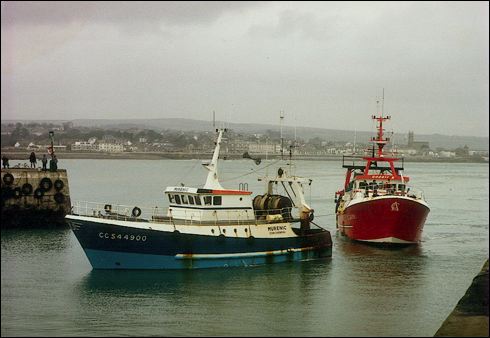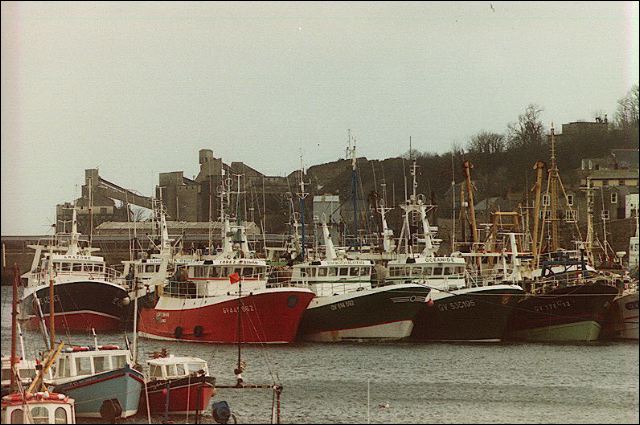Shooting away around 6:30am and completing her forth shot by 11:30am - the guys aboard France's futuristic seine netter, Arpege don't hang around. The boat was funded largely by the French government to help create a fishing boat design for the future.
Back in the mid 1970s when the Breton fleets from Audierne, Guilvinec, Douarnenez, Loctudy, Lorient, Concarneau and St Guenole fishing way west of the Scillys lost what was deemed an unacceptable number the government of the day prompted the industry to come up with a design capable of working trips up to 15 days (Petite au Large) that would handle the weather likely to be encountered by boats working over 24 hours steam from their home ports...
 |
| French regulations restricted these boats to a maximum of 15 days at sea - the boats all worked by rotating the crew with an extra hand ashore - that way each crew had two lots of three weeks off in a year - generally the boat was in port for two nights only before sailing again. |
as a result, from the early 1980s virtually the entire French fleet was replaced by (mostly) steel stern trawlers - fully aluminium shelterdecked with galley, mess, washroom, engineroom and accommodation offset to port and starboard leaving a clear deck space amidships for easy fish handling and net repairs - most had at least two or even three net drums mounted on a stern gantry.
Financing new vessels in France was made easier by virtue of support from a loan fund for young skippers (every French boat paid into this fund)and excellent support and loan terms from the bank Crédite Maritime - which as its name suggests exists for the benefit of maritime industries (there is also Crédite Agricole for farming) - new vessels were used as collateral without owners having to secure their homes as a loan guarantee.
The first of the new boats were all around 16-18m...
and even then were only seen in Newlyn when the weather was particularly poor - sometimes well over 20 would take shelter (more would be in Falmouth and the Scillys, or Dunmore and Milford Haven)...
 |
| 23m Roxanne in Guilvinec |
eventually, replacement still more seaworthy boats increased in size to around 23m - as a result they seldom ran from the weather to take shelter in ports like Newlyn, preferring to dodge head-to-wind until the weather passed...
even in 2104 when the umpteenth severe storm of the winter passed through the western approaches some of the French fleet stuck out the weather and fished, in the 'lulls'.
 |
| Le Royale in Douarnenez |
eventually, the boat's notoriety was forever enshrined in song before she was run down and sunk by a Norwegian merchant ship while returning home from a trip.



